In today’s world, where environmental concerns are becoming increasingly paramount, it’s essential to explore eco-friendly alternatives to everyday products. One such alternative that has gained significant attention in recent years is the use of palm leaf plates. These plates offer a perfect blend of style and sustainability, making them an ideal choice for various occasions and settings.
Introduction
Palm leaf plates are a revelation in the world of sustainable living and dining. These plates are crafted from naturally fallen palm leaves, providing an excellent alternative to traditional disposable plates made from plastic or paper. In this article, we’ll delve deeper into the world of palm leaf plates, their origin, benefits, production process, and how they fit seamlessly into various aspects of our lives.
The Origin of Palm Leaf Plates
Palm leaf plates have a rich history rooted in South Asia, where the use of leaves for serving food dates back centuries. The leaves of the Areca palm tree are particularly famous for their suitability in plate production. These leaves are naturally shed by the tree, making their collection an eco-friendly practice.
The tradition of using palm leaves for plates can be traced back to ancient civilizations in India, Sri Lanka, and other parts of South Asia. In these regions, people discovered the unique properties of palm leaves that made them ideal for serving food.
The Areca palm, also known as the Betel nut palm, is native to tropical regions of South and Southeast Asia. This palm tree is known for its large, fan-shaped leaves that provide ample surface area for crafting plates.
To create palm leaf plates, artisans would collect fallen palm leaves from the forest floor. These leaves were already dried and had a natural resilience, making them perfect for crafting disposable plates. The leaves were then cleaned, sanitized, and shaped into various plate designs and sizes.
The practice of using palm leaf plates not only served a functional purpose but also held cultural significance. It was a way for communities to connect with nature, utilizing a readily available and renewable resource.
Over time, the tradition of making palm leaf plates has spread to other parts of the world, driven by the growing awareness of sustainability and the desire to reduce the environmental impact of disposable tableware. Today, palm leaf plates are not just a historical artifact but a symbol of a sustainable future, representing the harmonious coexistence of tradition and modernity.
Why Choose Palm Leaf Plates?
There are several compelling reasons to choose palm leaf plates as a sustainable and eco-friendly alternative to traditional disposable plates:
Eco-Friendly Material
The primary reason to choose palm leaf plates is their eco-friendliness. Unlike plastic plates that can take hundreds of years to decompose, palm leaf plates are entirely biodegradable. They return to the earth within weeks, leaving no harmful residue behind.
Palm leaves are a renewable resource, as they are naturally shed by the Areca palm tree and can be sustainably harvested without harming the tree. This ensures a constant and eco-conscious supply of raw materials for plate production.
Biodegradability and Compostability
Palm leaf plates not only decompose rapidly but also enrich the soil. When disposed of in compost, they contribute to nutrient-rich humus, benefiting the environment. This makes them an excellent choice for those who are passionate about reducing waste and promoting healthy soil.
Sturdiness and Durability
One might assume that eco-friendly plates made from natural materials are less sturdy, but this is not the case with palm leaf plates. They are surprisingly sturdy and can withstand both hot and cold temperatures. This durability makes them suitable for a wide range of culinary experiences, from hot curries to chilled salads.
Palm leaf plates do not compromise on functionality or strength, providing a reliable option for serving various dishes at events, parties, or daily meals.
In summary, choosing palm leaf plates means making an environmentally conscious decision. These plates not only reduce plastic waste but also support sustainable practices, enrich the soil, and offer durability without compromising on style and functionality. By opting for palm leaf plates, you contribute to a greener and more sustainable planet.
Production Process
The production of palm leaf plates involves a series of steps, from the collection of fallen palm leaves to the crafting of the final plate. Each step is carefully executed to ensure the quality, hygiene, and eco-friendliness of the end product.
Harvesting Palm Leaves
The process begins with the collection of fallen palm leaves from the forest floor. These leaves are naturally shed by the Areca palm tree, making their collection an eco-friendly practice. The collection is usually done by local communities or skilled harvesters who have a deep understanding of palm leaf selection.
Cleaning and Sterilization
Once the palm leaves are collected, they undergo a rigorous cleaning and sterilization process. This step is crucial to ensure that the final product is safe for serving food. The leaves are thoroughly washed to remove any dirt, dust, or impurities. They are then sanitized using eco-friendly methods, such as hot water or steam treatment, to eliminate any potential contaminants.
Molding and Shaping
After cleaning and sterilization, skilled artisans take over the process. They carefully mold and shape the palm leaves into various plate designs and sizes, adding an aesthetic element to their functionality. The artisans use traditional techniques passed down through generations to create intricate and attractive plate patterns.
The molding and shaping process is a combination of craftsmanship and precision. It requires skill and attention to detail to ensure that each palm leaf plate meets quality standards. Once shaped, the plates are allowed to dry naturally, retaining their structural integrity.
The final result is a set of palm leaf plates that are not only eco-friendly but also aesthetically pleasing. These plates embody the artistry and sustainability of traditional practices while catering to modern preferences for eco-conscious dining options.
In conclusion, the production process of palm leaf plates is a testament to the harmony between nature and human craftsmanship. From the forest floor to your dining table, every step is carried out with care and respect for the environment, offering you a sustainable and stylish dining experience.
Variety of Designs and Sizes
Palm leaf plates come in an impressive array of designs and sizes, making them a versatile choice for various occasions and settings. This variety is one of the factors that contribute to their popularity among environmentally conscious consumers and event planners.
Design Diversity
When it comes to design, palm leaf plates offer a range of options to suit different tastes and preferences. Some of the common design variations include:
- Classic Round Plates: These are the most commonly used palm leaf plates and are suitable for a wide range of dishes.
- Square Plates: Square-shaped plates add a modern touch to your dining experience and are favored for their unique appearance.
- Oval Plates: Oval plates combine the elegance of traditional round plates with a slightly elongated shape, offering a sophisticated look.
- Leaf-Shaped Plates: Some palm leaf plates are designed to mimic the natural shape of palm leaves, adding an organic and rustic feel to your table setting.
- Compartment Plates: These plates feature sections or compartments, making them ideal for serving meals with multiple components, such as buffets and picnics.
- Scalloped Edge Plates: Scalloped edges add a decorative element to the plates, enhancing their visual appeal.
Size Options
Palm leaf plates are available in various sizes to accommodate different serving needs. The size options include:
- Dinner Plates: These are typically the largest palm leaf plates, suitable for serving main courses.
- Salad Plates: Smaller than dinner plates, these are ideal for appetizers, salads, and desserts.
- Side Plates: Compact and versatile, side plates are commonly used for bread, butter, or small side dishes.
- Bowl-Shaped Plates: These plates have a shallow, bowl-like design, making them perfect for soups, stews, or pasta dishes.
- Mini Plates: Miniature palm leaf plates are used for serving bite-sized appetizers or desserts at cocktail parties and events.
The variety of designs and sizes available allows you to choose palm leaf plates that best suit the occasion, whether it’s an elegant dinner party, a casual picnic, a wedding reception, or a family gathering. The versatility of palm leaf plates makes them a go-to option for those looking to combine sustainability with style in their dining experiences.
Palm Leaf Plates in Everyday Life
Palm leaf plates have transcended their traditional roots and are now an integral part of everyday life for many environmentally conscious individuals and families. Their versatility, eco-friendliness, and style make them a popular choice for various occasions and settings. Here’s how palm leaf plates fit seamlessly into everyday life:
Parties and Events
Palm leaf plates have become a popular choice for parties and events of all kinds. Whether it’s a birthday celebration, a wedding reception, a baby shower, or a corporate gathering, these plates add a touch of elegance to any occasion.
- Elegance and Style: Palm leaf plates have a natural, rustic charm that complements both casual and formal settings. They enhance the overall aesthetics of the event.
- Convenience: The disposable nature of palm leaf plates simplifies cleanup after a gathering, allowing hosts and guests to enjoy the event without worrying about washing dishes.
- Eco-Conscious Choice: Choosing palm leaf plates for events sends a powerful message about sustainability and environmental responsibility to guests. It reflects a commitment to making eco-friendly choices even in festive moments.
Restaurants and Catering Services
Many restaurants and catering services have embraced palm leaf plates as a sustainable alternative to traditional disposable options. Here’s why they are a preferred choice in the food industry:
- Durability: Palm leaf plates can withstand hot and cold foods without losing their structural integrity. This makes them suitable for a wide range of culinary offerings.
- Visual Appeal: The unique and rustic appearance of palm leaf plates enhances the presentation of dishes, contributing to a memorable dining experience.
- Positive Customer Perception: Restaurants that use eco-friendly tableware like palm leaf plates often enjoy a positive reputation among environmentally conscious diners. It can attract a loyal customer base.
Home Use
Palm leaf plates are not limited to special occasions. They have found their place in everyday meals at home. Here’s how they make life easier and more sustainable:
- Convenience: On busy weekdays or lazy weekends, using palm leaf plates eliminates the need for washing dishes, saving time and effort.
- Family-Friendly: Families with children appreciate palm leaf plates for their sturdiness. They can handle kids’ meals without the risk of breaking or spilling.
- Reduced Plastic Waste: By using palm leaf plates regularly, households reduce their reliance on single-use plastic plates, contributing to a greener planet.
Palm leaf plates have seamlessly integrated into everyday life, offering an eco-friendly alternative that doesn’t compromise on style or convenience. Whether it’s a special event or a casual family dinner, these plates provide a sustainable and stylish dining solution.
Maintenance and Care
Maintaining and caring for palm leaf plates is a straightforward process that requires minimal effort. These eco-friendly plates are designed to be user-friendly and environmentally responsible. Here’s how to ensure the longevity of your palm leaf plates and keep them in optimal condition:
1. Single-Use Nature
Palm leaf plates are intended for single use. After enjoying a meal, dispose of them responsibly. The beauty of palm leaf plates lies in their biodegradability, so they can be composted along with other organic waste. This ensures that they return to the earth and enrich the soil without harming the environment.
2. Microwave-Safe
Palm leaf plates are microwave-safe, making them convenient for reheating leftovers. You can confidently place them in the microwave without worrying about harmful chemicals leaching into your food. However, avoid prolonged exposure to high heat, as this may cause the plates to become brittle.
3. Avoid Wet or Oily Foods
While palm leaf plates are sturdy, they may absorb excess moisture or oil if exposed to very wet or oily foods for an extended period. To prevent this, it’s a good practice to use them for dishes that are not excessively liquid or greasy. For wetter foods, consider using a secondary plate or container to catch any drips.
4. Minimal Maintenance
One of the advantages of palm leaf plates is their low maintenance. Unlike traditional dishes, they do not require elaborate washing or special care. After use, simply discard them in a compost bin or pile. If they are lightly soiled, wiping them with a damp cloth is usually sufficient.
5. Storage
Store palm leaf plates in a cool, dry place away from direct sunlight and moisture. This helps maintain their structural integrity and prevents any potential warping or discoloration.
6. Sustainability
Remember that by using palm leaf plates, you are contributing to sustainability. These plates are crafted from a renewable resource and return to the earth in an environmentally friendly manner. Embrace their eco-conscious nature and enjoy guilt-free dining.
By following these simple guidelines, you can ensure that your palm leaf plates not only enhance your dining experience but also continue to uphold their eco-friendly qualities. Palm leaf plates offer both convenience and environmental responsibility, making them an excellent choice for modern, conscious consumers.
Cost-Efficiency
When evaluating the cost-efficiency of palm leaf plates, it’s essential to consider the long-term benefits they offer in comparison to traditional disposable plates made from plastic or paper. While palm leaf plates may appear slightly more expensive at first glance, their unique qualities and sustainability make them a cost-effective choice over time.
1. Durability
Palm leaf plates are remarkably sturdy and can handle a wide range of temperatures, from hot curries to chilled salads. Unlike some disposable plates that may become soggy or flimsy when exposed to moisture or heat, palm leaf plates maintain their structural integrity. This durability means fewer plate breakages, reducing the need for replacements.
2. Eco-Friendliness
The true cost-efficiency of palm leaf plates lies in their eco-friendliness. They are crafted from naturally fallen palm leaves, making them a sustainable choice. When disposed of in compost, they biodegrade quickly and enrich the soil, contributing to a healthier environment. This contrasts with plastic plates, which persist in landfills for centuries, incurring hidden costs related to waste management and environmental damage.
3. Reduction in Cleanup Time
For both households and businesses, using palm leaf plates reduces the time and effort spent on dishwashing. After use, simply dispose of them in compost bins, eliminating the need for washing, rinsing, and drying dishes. This time-saving aspect can be especially valuable during large gatherings or events.
4. Positive Brand Image
For restaurants, catering services, and event planners, adopting palm leaf plates can lead to a positive brand image. Customers and clients increasingly appreciate businesses that make eco-conscious choices. This positive perception can translate into customer loyalty and increased patronage, ultimately benefiting the bottom line.
5. Minimal Storage Requirements
Palm leaf plates are stackable and require minimal storage space. Unlike bulky, reusable dishes that demand significant storage area, these plates are space-efficient. This can be a valuable asset for businesses with limited storage capacity.
In summary, while the upfront cost of palm leaf plates may seem slightly higher than that of disposable plastic or paper plates, their durability, eco-friendliness, and time-saving advantages make them a cost-efficient choice in the long run. By choosing palm leaf plates, you not only invest in quality tableware but also contribute to a greener future and potentially save on maintenance and waste management costs.
Challenges and Concerns
While palm leaf plates offer numerous benefits, there are certain challenges and concerns related to their production and adoption on a larger scale. It’s essential to be aware of these issues to ensure sustainable practices and continuous improvement within the palm leaf plate industry:
1. Ethical Harvesting Practices
The primary source of raw materials for palm leaf plates is naturally fallen palm leaves. However, ensuring ethical and sustainable harvesting practices can be challenging. There’s a need for responsible collection methods that don’t harm the Areca palm trees or disrupt local ecosystems.
2. Consistent Supply
Meeting the growing demand for palm leaf plates worldwide while maintaining a consistent supply of high-quality leaves can be a logistical challenge. It’s essential to balance the market demand with the ability to harvest leaves sustainably.
3. Quality Control
The production of palm leaf plates often involves skilled artisans who craft each plate by hand. Maintaining consistent quality standards across a range of handmade products can be challenging. Quality control processes are crucial to ensuring that each plate meets safety and aesthetic criteria.
4. Transportation and Distribution
Palm leaf plates are often produced in regions where the Areca palm trees are abundant, such as South Asia. Shipping and distributing these plates to various parts of the world can incur environmental costs, such as carbon emissions from transportation.
5. Pricing
While palm leaf plates offer long-term cost savings, the initial price may deter some consumers who are accustomed to cheaper disposable alternatives. Educating consumers about the environmental and long-term economic benefits is important for wider adoption.
6. Recycling Challenges
While palm leaf plates are compostable, not all regions have efficient composting facilities. This can pose challenges for proper disposal and recycling. Promoting composting infrastructure is essential for maximizing the environmental benefits of these plates.
7. Limited Heat Resistance
While palm leaf plates can withstand moderate temperatures, they may not be suitable for extremely hot foods or extended exposure to direct heat sources. This limitation should be considered when choosing the appropriate dishes for specific culinary needs.
8. Awareness and Education
Many consumers may still be unaware of the benefits of palm leaf plates or how to properly dispose of them. Raising awareness and providing clear guidance on their usage and disposal is crucial for maximizing their environmental impact.
Addressing these challenges and concerns requires collaboration between producers, policymakers, and consumers. By promoting ethical harvesting practices, improving logistics, and educating the public, the palm leaf plate industry can continue to grow sustainably and contribute to a greener planet.
The Future of Palm Leaf Plates
The future of palm leaf plates looks promising as environmental consciousness continues to grow worldwide. These eco-friendly and stylish dining alternatives are expected to play an increasingly significant role in sustainable living and dining practices. Here are some key aspects that indicate a bright future for palm leaf plates:
1. Rising Demand
As more individuals and businesses prioritize sustainability, the demand for eco-friendly alternatives like palm leaf plates is on the rise. Consumers are actively seeking products that reduce their environmental impact, and palm leaf plates align perfectly with this mindset.
2. Advancements in Production Techniques
The palm leaf plate industry is continually evolving, with advancements in production techniques and technology. These developments lead to increased efficiency, higher quality standards, and expanded design options. As production becomes more streamlined, palm leaf plates may become even more accessible and affordable.
3. Awareness and Education
Efforts to raise awareness and educate consumers about the benefits of palm leaf plates are crucial for their continued success. As people become more informed about the environmental advantages and convenience of using these plates, their adoption is likely to grow.
4. Expansion Beyond Traditional Markets
While palm leaf plates have deep roots in South Asia, they are gaining popularity in regions far beyond their place of origin. The global market for eco-friendly tableware is expanding, and palm leaf plates are well-positioned to meet this growing demand.
5. Collaboration with Sustainable Brands
Collaborations between palm leaf plate manufacturers and sustainable brands are likely to increase. These partnerships can lead to innovative marketing strategies and eco-conscious initiatives that further promote the use of palm leaf plates.
6. Supportive Policies
Government policies and regulations that encourage the use of sustainable alternatives can also shape the future of palm leaf plates. Incentives for businesses and consumers to choose eco-friendly options can accelerate their adoption.
7. Consumer Influence
Ultimately, consumers hold significant power in shaping the future of palm leaf plates. By making informed choices and demanding sustainable alternatives, individuals can drive positive change in the industry and inspire others to do the same.
In conclusion, the future of palm leaf plates appears bright and sustainable. With increasing awareness, evolving production methods, and a growing global demand for eco-friendly products, these plates are poised to become even more prevalent in everyday dining and special occasions. They represent a harmonious blend of tradition, style, and environmental responsibility, making them a choice that resonates with the values of modern consumers.
Conclusion
Palm leaf plates are indeed the perfect blend of style and sustainability. They offer an elegant dining experience while leaving a minimal environmental footprint. By choosing palm leaf plates, you not only elevate your table setting but also contribute to a greener, more eco-conscious world.
FAQs
- Are palm leaf plates safe for hot foods?
- Yes, palm leaf plates can withstand hot temperatures, making them suitable for serving hot dishes.
- Can palm leaf plates be reused?
- Palm leaf plates are designed for single-use, but they can be composted after use, making them environmentally friendly.
- Where can I buy palm leaf plates?
- Palm leaf plates are available online and in eco-friendly stores. You can easily find them for purchase.
- Do palm leaf plates have any odor or taste?
- No, palm leaf plates are odorless and tasteless, ensuring they do not affect the flavor of your food.
- Are palm leaf plates more expensive than plastic plates?
- While palm leaf plates may have a slightly higher upfront cost, their durability and environmental benefits make them cost-effective in the long run.
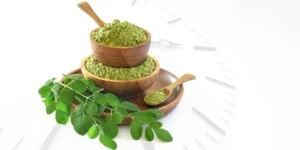



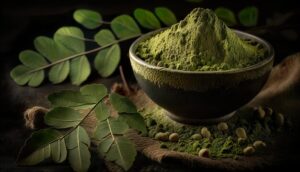

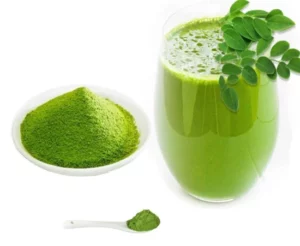


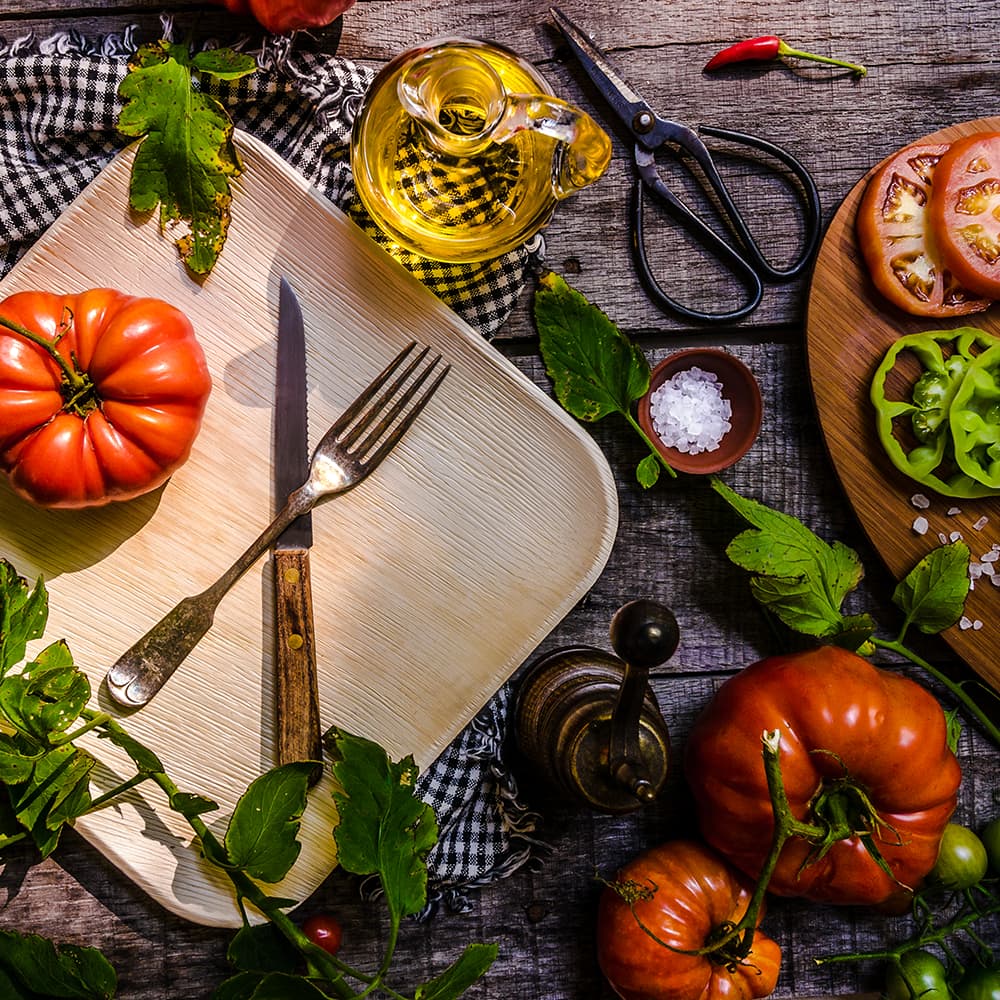

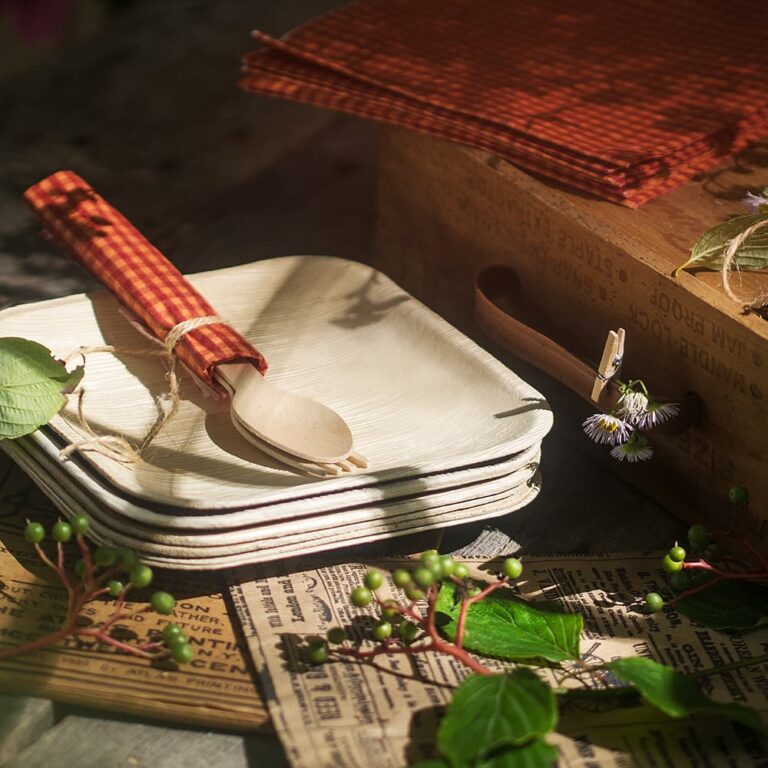



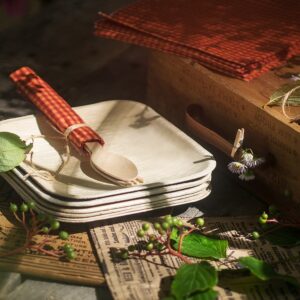


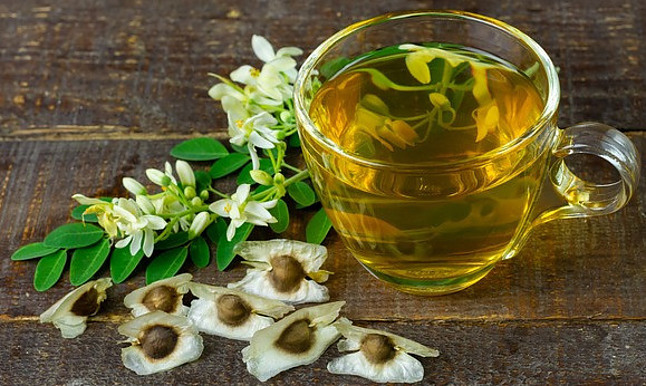
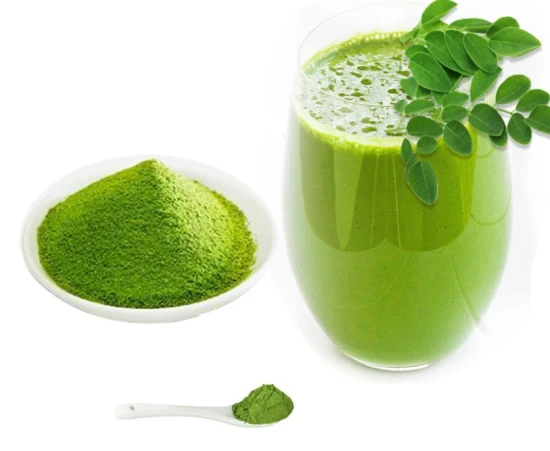
+ There are no comments
Add yours